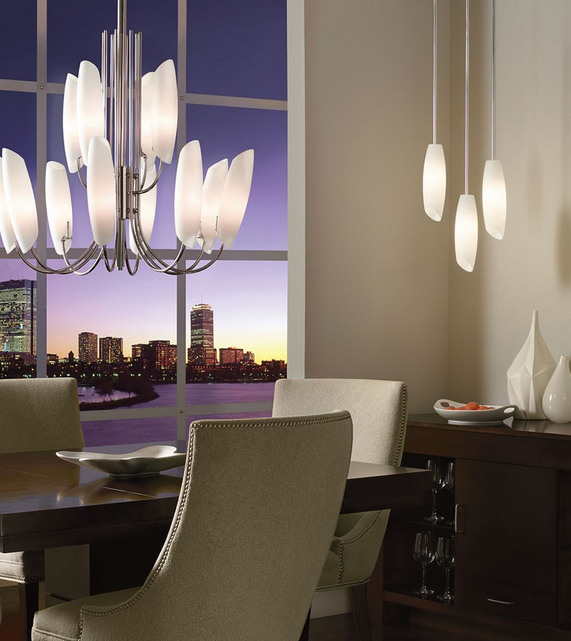Lighting elements possess a particularly enchanting quality, and part of the charm of lighting fixtures is their blend of artistry with functionality. Lighting fixtures can be as much an artistic expression as paintings that grace the walls of a space, and can easily be considered functional sculptures.
Each lighting fixture has the ability to make a fashion statement in its environment, and interior designers utilize the artistic qualities of lighting elements to establish a mood and ambiance to each room that is being decorated.
So, which lighting style tends to catch your eye? The answer to this question can give insight into your personality and style. Often elements of your unique lighting style also complement elements of your wardrobe, the style of the structure that is being decorated, and even the landscaping that surrounds the space. Let’s take a closer look at lighting elements and consider the value of their style…
Contemporary Style
The svelte lines and geometric forms of contemporary design tend to “open a space” and make the environment feel larger. Psychologically, contemporary design also has an opening effect, inviting the mind and mood to flow and expand beyond the corridors of the immediate environment.
Modern Style
Modern lighting fixtures follow the basic aspirational theme that “form follows function.” The look can be industrial or more whimsical with the playful art deco designs. You’ll find elements of chrome, stainless steel and frosted glass or Lucite in saturated colors and minimalistic shapes that make the modern style timeless.
Traditional Style
In contrast to the expansive effects of contemporary design, traditional design tends to draw the focus of the observer unto itself with ornate, intricate details that can captivate one’s attention for extended lengths of time. Classic elements of gold leaf often adorn traditional lighting elements, encompassing the style trends from “olde world” European renaissance, Baroque, and Victorian design. On the other end of the traditional design spectrum, we find colonial lighting elements equally capable of grasping and holding one’s attention with hand carved details and appealing repetitive patterns.
Cottage Style
The cozy, earthy, and romantic ambiance created by cottage styled lighting elements encourage feelings of comfort and security. Handcrafted natural materials are the hallmark of cottage-styled lighting fixtures, such as carved wood or stone, handcrafted brass, wrought iron or bronze, and stained or blown-glass.
Tiffany-styled lighting fixtures can introduce the warmth and color into an environment with rich jewel-toned stained glass elements, or they can bring an open, airy feel to a room with the use of clear or frosted glass shades and filament bulbs to complement muted neutral tones throughout the space.
Transitional Style
The transitional lighting style is versatile and very popular. Transitional lighting fixtures have sleek, streamlined curves and a simple yet sophisticated flair to their design. Neutral colors and fabric shades bestow a soft, ambient glow, lending a comfortable-yet-classy and even glamorous feel to their environment. Shaker and Mission designs are also great examples of transitional style with their practical and subtle elegance in design.
Asian Influences in Transitional Style
The Arts and Craft movement exemplified a graceful blend of colonial and Asian design, and you’ll find that the elegant, simple lines and natural material elements of Asian design in lighting fixtures are often surprisingly compatible with colonial and ranch-styled settings.
As humans, we are not one-dimensional creatures, and it’s not uncommon to find ourselves drawn to a variety of lighting styles. Rather than feeling conflicted because of an attraction to more than one style, imagine integrating your choices and expressing your unique sense of style. Browsing the vendors at The Lighting Gallery is sure to give you all kinds of inspiration.



